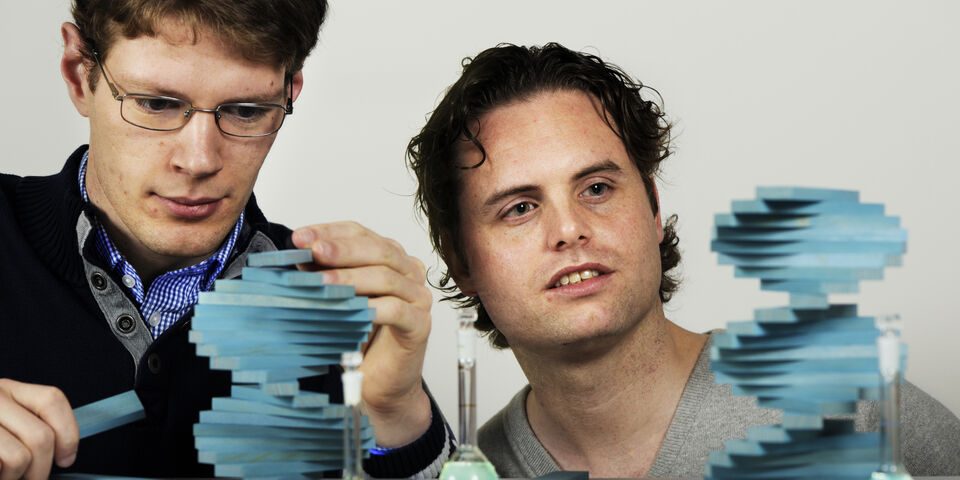Secrets of self-assembly unraveled
TU/e researchers have managed to describe the conditions under which specific molecules can clump together and form a useful material. The model for this self-assembly may be used in the production of plastic solar cells, they state in an article that was published on the website of PNAS magazine.
The first author is doctoral candidate Peter Korevaar from the chemistry group Macromolecular and Organic Chemistry. He worked with researchers of the Computational Biology Group (Biomedical Engineering), and the Institute of Complex Molecular Systems (ICMS).
The self-assembly of molecules is often a matter of trial and error: the building block molecules are put together, and then it’s a matter of waiting whether or not the resulting construction has the desired structure. In their publication, Korevaar and colleagues describe a model that has more control over the assembly process. In a way, the model tells us what buttons to push (to change parameters like temperature, concentration, solvent) to be able to assemble the right material.
In their publication, the researchers demonstrate how their model works for an assembly process of two molecules that form a material similar to that what’s used for plastic solar cells. Pretty soon, the model may be used for the production of such solar cells, ass well as for the optimization of other biomaterials, including hydrogels. For the first time ever, a model was used to come to grips with a self-assembly process.
According to Korevaar, the added value lies in the fact that they now have a better insight in and understanding of the interactions between the molecules the model is based on. He says it has paved the way for an expansion of more complex assembly processes, and for predicting those processes, “with the final frontier being a synthetic cell”.
(Source: TU/e Press Team)


Discussion